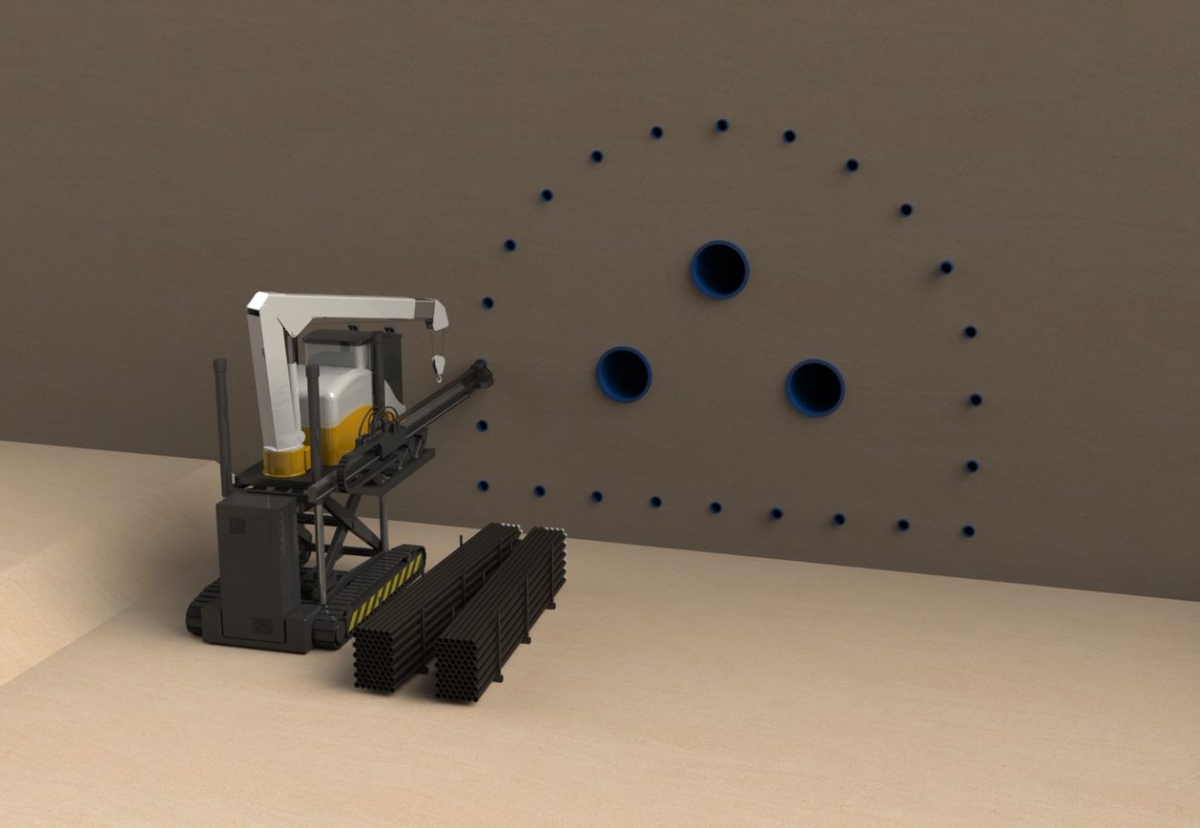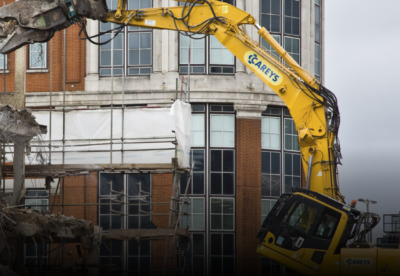The automated construction method builds tunnels more than 10 times faster and at half the cost of conventional techniques.
HyperTunnel technology uses swarm robotics to effectively 3D print an supporting arch structure in the ground before any excavation takes place.

Using horizontal directional drilling, a series of bore pipes are drilled in the geology to form the outline of the tunnel. With precision accuracy, a number of semi-autonomous robots move throughout the inside of the bores to create the structural shell of the tunnel using swarming techniques.
This advanced automated tunnelling system will be piloted at The Global Centre of Rail Excellence project under construction at the Dulais Valley site in South Wales.
The project aims to provide an economically viable alternative to hazardous level crossings, while improving safety, increasing rail capacity and avoiding inconvenience to road and rail users.
hyperTunnel will build the pedestrian-sized tunnel under a GCRE’s test track, designed to allow the track above to remain open throughout the construction process.
A fleet of ‘hyperBot’ robots enter the ground via an arch of plastic pipes.
Once inside, the robots 3D-print the tunnel shell by deploying construction material directly into the ground.
HyperTunnel co-founder Steve Jordan, said: “We are delighted that the GCRE sees the same potential in the hyperTunnel method as our partners in the construction industry.
“Having spent many hundreds of hours developing our robot fleet in the lab in Basingstoke, the system is now ripe for being proven on a real site, in accelerated test conditions, and which can be visited by interested parties.
The GCRE facility is going to be a huge opportunity for us and we can’t wait to get started and to present a feasible technological solution to the longstanding level-crossing issue.”
Currently under construction, The Global Centre of Rail Excellence is a world class facility for rail research, testing and certification of rolling stock, infrastructure and cutting-edge new technologies currently being developed in South Wales.
Located on a 700-hectare site, GCRE will become Europe’s premier site for rail and mobility innovation.









































 (300 x 250 px).jpg)











.gif)

